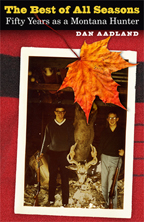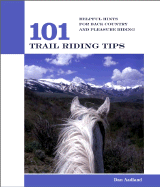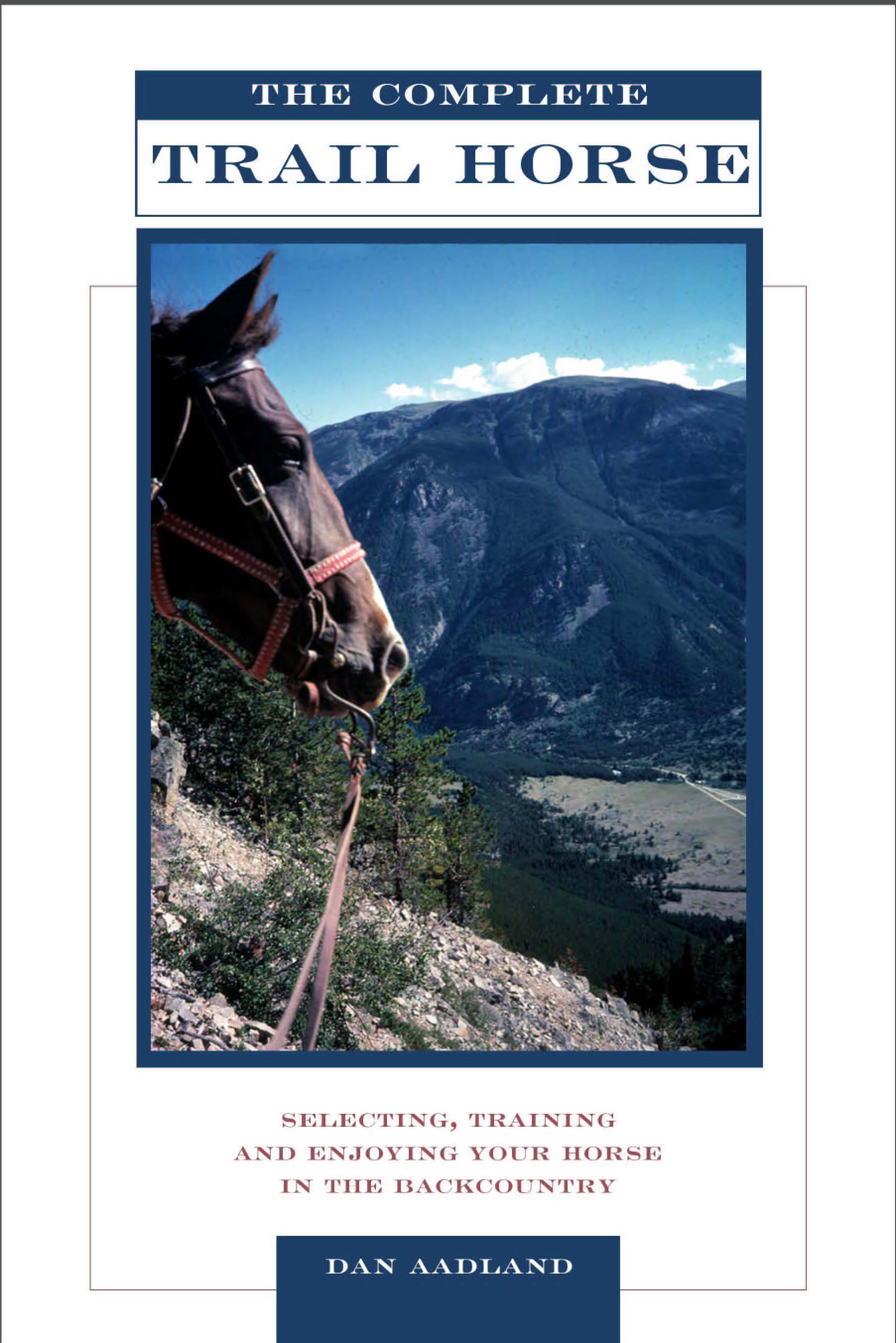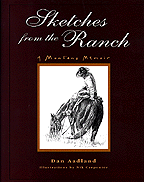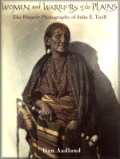Dan's Books
|
|
The Pocket Guide to Equine
Knots Every
rider must be able to tie solid, stable knots. Experienced trainer and
breeder Dan Aadland is here to help with The
Pocket Guide to Equine Knots, a compact guidebook filled with only the
most useful and practical knots for riders and horse owners. ·
Square knot ·
Bowknot ·
Hitch ·
And many more |
|
|
The Best of All Seasons: Fifty Years as a
Montana Hunter. Since first learning to handle a Winchester .22 as a kid, Dan Aadland has exulted in hunting—not as a sport but as a calling. In this book he takes readers to Montana’s prairies and mountains in search of antelope, whitetail deer, moose, and the occasional upland bird as he vividly describes the rituals and camaraderie of hunting culture. In fifteen essays recounting a lifetime of adventures, Aadland spins tales of a hunter whose years have been enriched by pursuing game under Montana’s big sky. He conveys the drama of stalking elk in deep snow, when sometimes just the chance at a shot is enough, and describes the tricks of bowhunting. He tells how hunting with horses was “the real deal”: planting one’s foot in the stirrup and sensing an affinity with great hunters of the past. Underlying his memoir is a deep respect for wildlife and appreciation for the West. Sometimes nostalgic, often humorous, Aadland’s book recounts the highs and lows of the hunt while revealing why the pursuit of game remains so important to so many people. The Best of All Seasons depicts hunting as an essential part of the good life, suggesting that in our civilized age it yet remains a fundamentally natural act. In allowing readers a glimpse into that life, this book simultaneously shows that for Dan Aadland, fine writing comes just as naturally.
|
|
|
101 Trail Riding Tips. One of the great joys of horseback riding is to be able to leave the beaten path for such activities as hunting, fishing, or camping, or simply for the pure pleasure of being out in nature. To ensure that you and your horse are enjoying the trail in the safest and most efficient ways, 101 Trail Riding Tips presents a broad array of advice, including selecting a good trail or pack horse, training for safety and responsiveness, choosing tack and other gear, and coping with a wide variety of terrains. It's a guide that's sure to increase the enjoyment of any trail ride, anytime and anywhere.
|
|
|
The Complete Trail Horse: Selecting,
Training, and Enjoying your Horse in the Backcountry. We’ve always considered raising rugged-but-beautiful mountain horses, ready to tackle any trail, our specialty. So it’s been doubly rewarding to receive a book contract from The Lyons Press, part of the Globe Pequot group (owners of Western Horseman) for what I hope will become the trail rider’s Bible: The Complete Trail Horse: Selecting, Training, and Enjoying your Horse in the Backcountry.
|
|
|
Sketches from the Ranch: A Montana Memoir. (from the front flap): In 1892 a stocky Danish immigrant cowboy names Magnus Jensen rode into south-central Montana, up a valley recently vacated by the Absorka (Crow) Indians. He liked what he saw and staked his future on the ranch he would carve there, on the irrigated fields he would water with ditches he dug, on the spare but protein-rich grass that would nourish his stock on the adjacent rangeland. More than a century has passed, but the nature of ranching in Montana has changed little. Spring still brings the birth of colts and calves, summer the growth, and fall the harvest. And in winter, when the snow drifts against the corral fences and the hay supply dwindles, there is always hope for the warm southern wind called "chinook" (snow-eater) and for that ultimate colt scheduled to appear when the grass turns green. Dan Aadland and his wife Emily live today on the ranch built by Magnus Jensen (Emily's grandfather). In this book Aadland approaches ranching as Thoreau approached life at Walden, to "front the essential facts" of it, to find its common denominator, to look at ranching as one looks at the yellow flower of the prickly pear cactus, acknowledging the spines while admiring the beauty. On the framework of one recent year, the essence of ranching is woven in tales past and present, tragic and comic. And through it all, a story is told--the story of the narrator's relationship with a remarkable horse--a once-in-a lifetime horse--a horse, perhaps, too good to be true.
|
|
|
Women and Warriors of the Plains: The Pioneer
Photography of Julia E. Tuell. In 1906 teenage bride Julia Tuell arrived at Lame Deer, Montana, on the Northern Cheyenne Indian Reservation with her schoolmaster husband. Seven years later the Tuells moved to the Rosebud Indian Reservation in South Dakota, and lived among the Sioux (primarily the Brule tribe of the Teton Lakota) until 1929. An Eastman Kodak camera became her constant companion when Tuell realized that the Plains Indian culture was changing before her eyes. She learned the Cheyenne language from the great chief American Horse. Knowledge of the language, along with her empathetic and gentle manner, opened doors barred to nearly all other whites. Tuell was allowed to photograph two sacred religious ceremonies of the Cheyenne and Sioux--the Sun Dance and the Massaum. In 1911 she photographed the last Massaum (Animal Dance) performed by the Northern Cheyenne. Julia Tuell photographed warriors who fought Lieutenant Colonel Custer, and women who sheltered and nourished children during the hardest days of Plains Indian life. Understanding that all facets of Plains Indian culture were precious and endangered, Tuell recorded the mundane and the magnificent, from women preparing meals to the weathered faces of tribal elders.
|
|
|
Horseback Adventures.
|
|
|
Train Your Horse for Backcountry Riding: A
Comprehensive Guide for Getting Beyond the Round Pen.
|

